Land Day is commemorated by Palestinians in Israel, the West Bank, Gaza, and the diaspora. As Israel's strategy has been to divide Palestinians, reducing Palestinians inside the Green Line to the status of a "minority," the political significance of united mobilization on Land Day cannot be underestimated.
The Daily Star ran a wonderful interview with Reverend Canon Dr. Shehadeh Shehadeh, then chairman of the National Committee for the Protection of Lands in Israel (now the priest at St. John's Episcopal Church in Haifa and the vice chairman of Al-Jebha, the Democratic Front for Peace and Equality), who led the 1976 strike. Patient and diligent organizing described by Dr. Shehadeh is an important reminder of what it takes to organize a mass action:
Young Israeli Bedouins participate in a demonstration to mark the Land Day near the Bedouin village of Abu Talul in southern Israel, Wednesday March 30, 2005. Land Day commemorates the unrest that erupted in March 1976 when Israeli Arabs protested the Israeli government's confiscation of thousands of acres of Arab-owned land and in which six Arab citizens were killed by Israeli police. (Tsafrir Abayov/AP)
Palestinians wave Palestinian flags during a protest against Israel's controversial barrier near the West Bank village of Beit Hanina, March 30, 2005. Thousands of protestors marched in the Jewish state to mark 'Land Day,' while thousands of Palestinians held demonstrations, some marred by stone-throwing clashes with Israeli soldiers, in the West Bank. (Mahfouz Abu Turk/Reuters)
Palestinian women shout at Israeli security forces during a protest against Israel's controversial barrier, near the West Bank village of Bilin March 30, 2005. Thousands of protestors marched in the Jewish state to mark 'Land Day,' while thousands of Palestinians held demonstrations, some marred by stone-throwing clashes with Israeli soldiers, in the West Bank. (Oleg Popov/Reuters)
Palestinian and Israeli protesters run after Israeli forces threw stun grenades during a protest against Israel's controversial barrier near the West Bank village of Bilin, March 30, 2005. Thousands of protestors marched in the Jewish state to mark 'Land Day,' while thousands of Palestinians held demonstrations, some marred by stone-throwing clashes with Israeli soldiers, in the West Bank. (Goran Tomasevic/Reuters)
A Palestinian man holds an olive tree plant after Israeli forces threw stun grenades during a protest against Israel's controversial barrier, near the West Bank village of Bilin March 30, 2005. Thousands of protestors marched in the Jewish state to mark 'Land Day,' while thousands of Palestinians held demonstrations, some marred by stone-throwing clashes with Israeli soldiers, in the West Bank. (Goran Tomasevic/Reuters)
Israeli forces arrest a peace activist during a protest against Israel's controversial barrier near the West Bank village of Bilin March 30, 2005. Thousands of protestors marched in the Jewish state to mark 'Land Day' while thousands of Palestinians held demonstrations, some marred by stone-throwing clashes with Israeli soldiers in the West Bank. (Goran Tomasevic/Reuters)
An injured Palestinian demonstrator is carried after he was hit with a rubber bullet fired by Israeli soldiers during a protest at the construction site of a section of Israel's separation barrier in the ourskirts of the West Bank village of Bil'in near Ramallah, Wednesday March 30, 2005. The march marked Land Day, which commemorates the unrest that erupted in March 1976 when Israeli Arabs protested the Israeli government's confiscation of thousands of acres of Arab-owned land and in which six Arab citizens were killed by Israeli police. Three demonstrators were slightly injured during the clashes Wednesday. (Oded Balilty/AP)
A Palestinian boy walks in front a burning tire during an anti-Israel protest at the Buraij refugee camp in the Gaza Strip, March 30, 2005. (Suhaib Salem /Reuters)
According to Shehadeh, the movement began when Rakah - the New Communist List, invited some 25 people (including the pastor) to a meeting in Haifa 29 years ago to discuss strategies for opposing the government's expropriation plans.
The group then held a larger meeting, to which the heads of Arab local councils were invited, and followed this by hosting an open, public meeting in a Nazareth film theater. Shehadeh's narration slows down as he recalls his profound amazement at the turn-out there.
"The meeting was enormous," he says, adding that members of the public not only filled the hall and corridors of the theater, but massed in the streets outside. It was at that meeting that the committee was officially formed, and Shehadeh appointed its chairman.
Palestinian public support for the committee proved to be its most precious resource. Letters the committee wrote to members of Knesset went largely unanswered, while an impromptu meeting with Israel's ruling Labor Party merely resulted in the party affirming that it would not reconsider its plans to expropriate private Palestinian land.
But Shehadeh and his fellow committee members reacted to governmental intransigence by intensifying their grass-roots campaign -- visiting the villages that were to be affected by the expropriation, informing residents of the plans and their likely consequences, and even photographing parcels of land destined for confiscation, whose coordinates would then be sent to villages to prompt local councils to discuss the plans. "I used to go to public meetings three or four times a week to tell people that we intended to organize a strike if the government doesn't listen to us," recalls the pastor.
True to their word, after weeks of rigorous campaigning, a strike was finally declared for March 30, 1976. Having failed to gain permission to hold a demonstration outside the Knesset, the committee instructed its supporters to register their protest by staying at home and striking peacefully.
Early on the morning of the strike, Shehadeh received a phone call alerting him that the government had ordered military and police forces to enter striking Arab villages.
Residents reacted with stone throwing and spontaneous demonstrations. By the end of the day, what had started out as a peaceful statewide protest had ended with the deaths of six unarmed Palestinians, felled by the live fire of Israeli security forces, in the Arab villages of Sakhnin, Arabeh, Kufr Kanna and Taibeh. Hundreds of other Palestinian citizens of Israel were maimed or injured.
Shehadeh believes the state's resort to violent confrontation with peaceful strikers that day was a tragic example of the long-term strategy that Israel continues to use to control Palestinians on both sides of the Green Line.
"Israeli policy has always been to treat the Palestinians with an iron fist," he says. "I know that, and I heard that several times, even from police people. They would say: 'Only through power can you be treated. You don't even know what democracy is.' So that's how we are treated," he explains.
Despite the violence, Shehadeh estimates that between 70 and 80 percent of the Palestinian public in Israel participated in the 1976 strike and quotes his late friend Saliba Khamis: "On Land Day, the genie came out of the bottle." (Sharif Hamadeh, "Priest Recalls Violent Origins of Land Day: Shehadeh Remembers Leading First Protest against Israeli Grab of Palestinian Properties," The Daily Star 31 Mar. 2005)
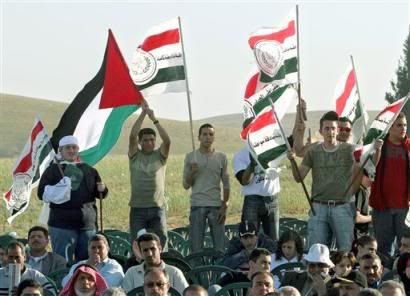
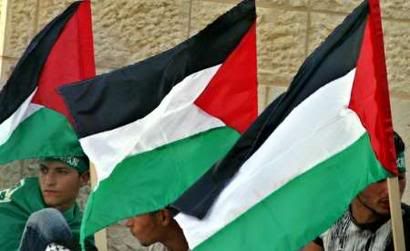
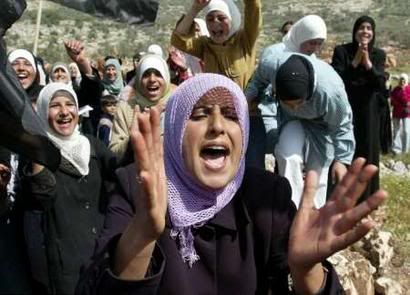
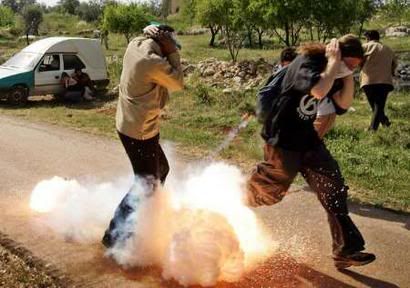
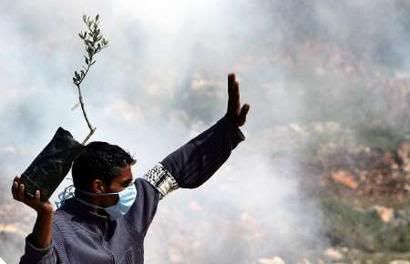
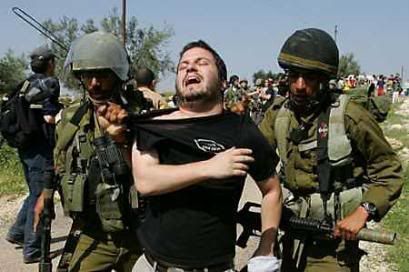
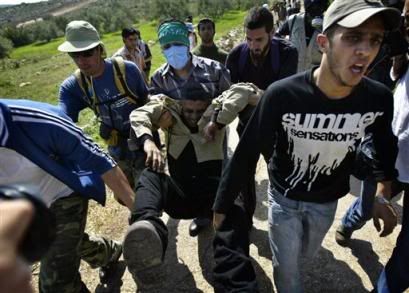





No comments:
Post a Comment